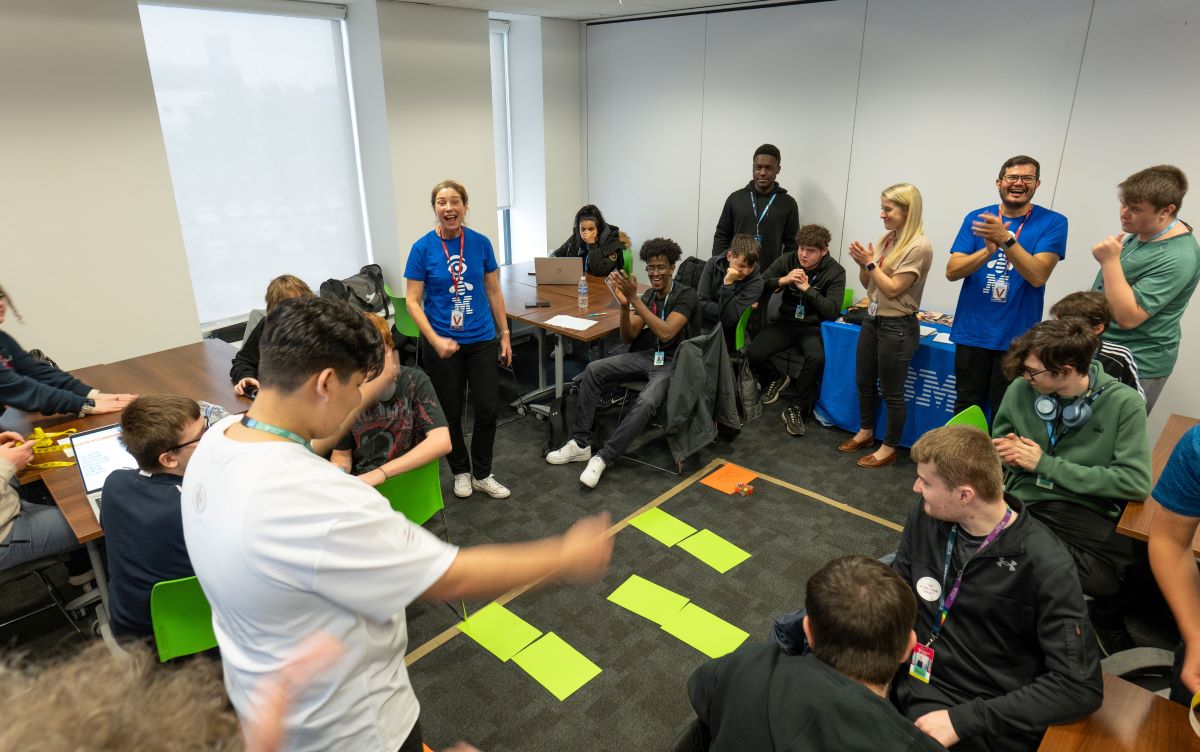Companies risk mass exodus as more than half of young professionals feel ‘burnt out’ right now

Britain’s Burnout Crisis
- Young professionals are most likely age group to experience feelings of burnout (aged 16-34)
- During the past 18 months, respondents flagged experiencing trouble sleeping (46%), exhaustion (46%) and negative thoughts (39%) as a direct result of work
- Plus, nearly half of respondents (48%) admitted to getting agitated at partners, family members and friends in response
- The Visier study finds that Britain’s burnout problem has the potential to trigger an employee retention crisis if not managed – 79% of respondents say they’ve considered leaving their current job due to feelings of burnout
More than half of young professionals (those aged 16-34), feel burnt out right now, according to new research exploring experiences of burnout pre and post pandemic from people analytics company, Visier.
The study asked 2,000 Brits whether they were currently experiencing feelings of burnout -defined using the World Health Organisation’s (WHO) definition of ‘feelings of energy depletion or exhaustion, increased mental distance from one’s job and reduced professional productivity in relation to chronic workplace stress.’
The findings – which follows the 18-month period of COVID-19 disruption to the workplace – indicate that nearly three quarters (73%) of all respondents feel more burnt out since the onset of the pandemic, with 16–24-year-olds (80%) suffering in greater numbers.
Gen Z however, is not alone. During the past 18 months, as a direct result of work, all respondents flagged experiencing trouble sleeping (47%), exhaustion (46%) and negative thoughts (39%). Plus, nearly half of respondents (48%) admitted to getting agitated at partners, family members and friends. When asked what was contributing to these feelings of burnout, respondents cited shortage of employees (38%), long work hours (30%) and lack of reward and recognition (25%) as major contributing factors.
Tackling retention challenges
Britain’s burnout problem is a challenge for retaining employees. According to the same survey, more than half (79%) of respondents have considered leaving their current job due to feelings of burnout. And, more than a third (38%) are actively job searching right now.
When it comes to burnt-out young professionals, the good news however, is that at least half of young professionals feel comfortable talking to their boss or manager about feelings of mental or physical exhaustion.
Flexibility key to improving burnout
When asked what, if anything, could reduce levels of burnout at work, more reward and recognition for the work that I do (41%), more flexibility in my working day (38%) and a better resourced team (37%) were all cited as key factors by those currently feeling burnt out at work.
Of all employees surveyed, more than a third (36%) of respondents said they would like to see employers implement more flexible working hours and more wellness programmes (32%) to reduce burnout in the workplace.
Andrea Derler, Principal for Research and Customer Value of Visier said:
“Britain is currently undergoing an occupational health crisis. Burnout is becoming pervasive in our workplaces and employers need to act now to protect the wellbeing of their people or face the reality of a talent exodus. In particular, companies risk losing up and coming junior talent as burnout is becoming a generational issue – felt strongest by the Gen-Z and Millennial workforce.
“Though time off work is an important way to recharge, it isn’t enough to alleviate chronic burnout. Leaders must understand how their people are feeling and engage employees in conversations about burnout using workplace tools to gauge their stress levels. Managers can then work with direct reports to alleviate work-related fatigue and provide crucial support. Only by identifying these feelings earlier on is it possible to act in time before the burnout crisis leads to voluntary turnover”.
Research methodology: The research was conducted by Censuswide, among a sample of 2,007 part time and full time employees who have been in full or part time employment for at least a 12 month period. The data was collected between 08.10.2021 – 14.10.2021. Censuswide abides by and employs members of the Market Research Society and follows the MRS code of conduct which is based on the ESOMAR principles.
Feeling the burn: UK regions most at risk of worker burnout
15th Nov 2021: Electric Bike Access has conducted a new study as part of a series on how work has changed since 2020 and how businesses can better support workers to balance work and home life.
In the new study, EBA has analysed furlough and labour productivity rates as well as work stress and depression data to show which areas of the country are under the most pressure since the start of the pandemic. The region most affected? The North West.
Over the course of the past 18 months the North West has seen the second highest proportion of workers go through furlough (West Midlands saw the most), and the third highest levels of productivity. In other words, productivity didn’t suffer because there were fewer workers. In fact, they charged ahead which could explain the high depression score with over 1 in 5 in the North West reporting moderate to severe depression in the most recent ONS survey.
On the opposite end of the spectrum, the East of England is the least stressed out region in the UK, having the 3rd lowest proportion of workers on furlough, good labour productivity and low levels of reported stress and depression. They scored 7 points clear of the next two least stressed out regions: Scotland and Yorkshire and the Humber.
The study also sourced tips from business leaders on how to reset with staff and improve overall wellbeing to reduce stress. “Reduce the use of ‘tough love’” was one mantra from Edward Mellett at Wikijob.co.uk. In other words, business and HR leaders should lead with empathy to help reduce overall stress and pressures on employees and get the best out of them.
Other tips include better training to help management spot early stages of burnout and mandatory offline hours whether during the day or after work hours to help staff focus and take a well-needed detox from their screens.
Ed Pegram, Business Manager at Electric Bike Access, also remarks on the findings: “Employee benefits and well-being are at a crossroads at the moment. Everything that we thought we understood before about work is changing as well as our priorities. Whether as business leaders or employees, we are all looking to strike the right balance at work so that we can enjoy ourselves outside of work.
Whether by encouraging staff to be more active by cycling to work or taking a yoga break during the day, or simply fostering safe spaces in which they feel they can speak up when they are struggling, businesses have to make necessary steps to improve working conditions moving forward.
We hope that by showing where workers are struggling in the UK and sharing some of our experts’ tips and advice, we can encourage employers to put their employees first and avoid a full-on burnout crisis.”
Stress Awareness Week: Supporting employees with stress and burnout
2nd Nov 2021: DeltaNet International, a global eLearning provider of compliance, health and safety and performance training solutions, has revealed that there has been a significant jump in users taking courses in managing stress since the start of the pandemic. Following almost two years of a global pandemic, DeltaNet has analysed its learners to understand how organisations have prioritised stress management in the workplace.
Recent reports by Randstad UK highlighted that 69% of employees feel confident about moving to a new role in the next few months, with staff burnout being one of the predominant factors. According to DeltaNet’s analysis, it found a 33.4% increase in its ‘Managing Your Personal Stress’ training course in 2021 compared to 2020 and a 40.4% increase in its ‘Managing Stress in Your Team’ training course in 2021 compared to 2020.
“It’s great to see that organisations are increasingly supporting their employees with stress management training; however, support does not just stop there. Understanding and knowing how to spot the signs of stress is just the first step. Providing additional support with one-to-one discussions, encouraging staff to take a walk every day and teaching employees to take up mindfulness activities such as Yoga is important,” highlights Darren Hockley, Managing Director at DeltaNet International.
“Unhealthy stress leads to employee burnout, which is bad news. Organisations need to understand the reasons why employees feel stressed. Is it due to the workload? Is it due to the team being understaffed? Is it due to time management or deadline issues? Or is it simply due to the ongoing effects of the pandemic and personal worries?
“Business leaders must make it their priority to support their staff through these issues. Employees who don’t receive any support will soon feel that their organisation and line managers don’t care enough about them. Remember to treat employees as people – they are not just another number. Everyone has feelings, and the minute staff feel they are being overlooked or unsupported, especially with stress and mental health, is the quicker they will look for that support elsewhere.”











Responses